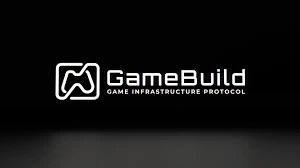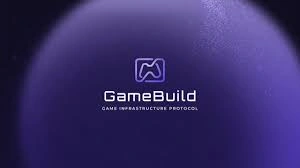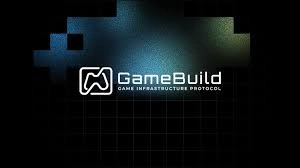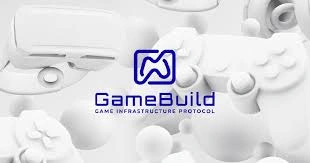GameBuild (GAME): Unlocking the Next-Gen Gaming Token
Table of Contents

Gamers, developers, and crypto enthusiasts — get ready to explore a fresh wave of GameFi innovation! Did you know the gaming market is forecasted to hit $300 billion+ this decade? The project behind the token GameBuild (GAME) is positioning itself at the heart of that surge. By bridging traditional Web2 games with blockchain infrastructure, GameBuild offers developers plug-and-play SDKs, in-game ad spots as tradable assets, and a reward system that aligns gamers, devs, and advertisers alike. In this article, we’ll unpack what the GAME token is, how the ecosystem works, why it matters, and what to watch out for. Jump in, because the gaming economy just got upgraded.
For more insights and updates on the latest trends in cryptocurrency, be sure to check out our Nifty Finances platform, which serves as your gateway to smarter financial decisions in the digital economy.

What is GameBuild (GAME) and its Core Mission
GameBuild is a next-generation gaming infrastructure platform designed to serve three core stakeholder groups: gamers, game developers, and advertisers. At its heart, GameBuild seeks to revolutionise the economics of gaming by applying Web3 capabilities (blockchain, tokenisation, decentralised assets) alongside emerging AI toolkits. According to its official site, GameBuild’s mission is to “Revolutionize economics for Gamers, Developers, and Advertisers. Powering a new dynamic for Games.”
In other words, GameBuild identifies the current disconnects in gaming: web2 games often lack interoperable assets, ad spaces are underleveraged, developers struggle with monetization, and gamers often have limited control over their digital assets. GameBuild aims to bridge these gaps by enabling:
- the migration of traditional Web2 games into Web3 ecosystems,
- transforming in-game ad-spaces into tradable assets, and
- Creating a gaming asset infrastructure that is interoperable and liquid.
Their mission centres on building the future of games — hence the name “Build” in GameBuild — and doing so via blockchain and AI toolkits so that the ecosystem becomes more open, asset-rich, and governed by its users.
Defining the GameBuild Ecosystem
The GameBuild ecosystem is centered around three roles: gamers, developers, and advertisers, each of whom gains new capabilities within a unified infrastructure. For gamers, GameBuild offers asset ownership, reward mechanisms, and access to interoperable items across games. For developers, the platform offers plug-and-play SDKs and AI-driven tools to migrate Web2 game titles into Web3 and to deploy in-game advertising modules and asset markets. For advertisers, GameBuild enables on-chain ad-spaces—within games—as tradable “ad spots”, reducing intermediaries and delivering direct value. As the website states: “GameBuild bridges traditional web2 games to the blockchain, enhancing asset interoperability and liquidity across the gaming ecosystem.”
Key features of the ecosystem include:
- Fair-minted “Ad Spots” that turn ad-spaces inside games into tradable assets, enabling direct ad placement and reducing intermediary costs.
- A sustainable incentive model where advertisers fund reward systems for both developers and gamers — aiming to avoid the pitfalls seen in purely pay-to-earn models.
- Plug-and-play AI-powered SDKs that allow developers to migrate Web2 games into the Web3 world quickly, leveraging AI toolkits to simplify integration.
The GameBuild ecosystem is the “platform” layer that connects all players in the gaming value chain under shared infrastructure, token economics, and interoperable asset systems.
Why the Name “GameBuild” Matters
The name “GameBuild” is more than branding — it encapsulates the vision of building the future of gaming. “Game” signals the focus on video games and interactive entertainment; “Build” signals construction, infrastructure, and creation. Together, the name implies that GameBuild is enabling the next wave of games — built on blockchain, powered by AI, and architected for interoperability.
Within the site, GameBuild emphasises that developers can use their “Build on GameBuild” modules — for example, AI toolkits, SDKs, and asset systems — to create new game worlds or convert existing ones. The naming reinforces their role as enablers of game creation and transformation. Building tomorrow’s games, bridging Web2 to Web3, transforming advertising into assets, and enabling interoperable gaming assets — the name aligns with that ambition.
How the GAME Token Fits In
The native token of the ecosystem, labelled GAME, plays a central role in driving the GameBuild economy. According to the website:
- For players, GAME tokens serve as a “universal passport” across the game ecosystem: they allow acquisition of dynamically generated in-game NFTs, participation in governance of the platform, and earning rewards through AI-curated quests and events.
- For developers, the GAME token is used as the “smart credit” for integrating AI models (e.g., GPT, LLaMA) into games, accessing the GameBuild AI toolkits and APIs, on-chain asset management, advertising modules, and more. Essentially, the token unlocks the developer-facing infrastructure.
- For advertisers, the GAME token enables purchases of ad-spots, execution of targeted campaigns, and creation of custom in-game ad placements with the transparency and reduced cost benefits of blockchain.
Thus, the GAME token is the utility and governance engine behind the GameBuild ecosystem: powering rewards, enabling trades of assets (such as ad-spots or NFTs), facilitating access to toolkits, and giving stakeholders a voice in platform governance.
GameBuild positions itself as an infrastructure-first platform that brings Web3 and AI tools into gaming. By enabling asset interoperability, transforming ad-spaces into tradeable assets, and offering an ecosystem where gamers, developers, and advertisers can collaborate and be rewarded, GameBuild aims to construct the next generation of gaming. The name, the ecosystem, and the GAME token all align to execute that core mission of building future games in a blockchain-enabled, AI-enhanced environment.

Key Features of the GameBuild Platform
GameBuild stands at the frontier of gaming innovation, merging blockchain and AI technologies to create a sustainable, transparent, and interconnected gaming economy. Designed for gamers, developers, and advertisers, its platform offers a suite of tools that redefine how games are built, monetized, and experienced. Below are the key features that make GameBuild a transformative force in the Web3 gaming space.
Plug & Play SDKs for Web2-to-Web3 Migration
A core innovation of GameBuild lies in its plug-and-play SDKs, which enable developers to migrate existing Web2 games into the Web3 ecosystem with minimal friction. Traditionally, converting a Web2 title into a blockchain-powered version required extensive technical restructuring. GameBuild solves this challenge with developer-friendly toolkits that automate integration.
Through these SDKs, developers can:
- Integrate blockchain functionalities such as NFT creation, token rewards, and wallet systems.
- Incorporate AI modules for dynamic in-game experiences and smarter asset management.
- Deploy new monetization models, including tradable ad spots and interoperable digital assets.
By simplifying the migration process, GameBuild ensures that developers retain creative control while embracing the economic opportunities of decentralization.
Tradable “Ad Spots” as On-Chain Assets
GameBuild introduces one of its most groundbreaking features — tradable “Ad Spots.” In traditional gaming, advertising is managed through intermediaries who control pricing and placement. GameBuild’s blockchain model turns these ad spaces into on-chain assets that developers and advertisers can trade or own directly.
This innovation allows:
- Developers to monetize in-game environments transparently.
- Advertisers to secure ad placements as NFTs, ensuring verifiable ownership.
- Gamers to benefit indirectly through shared incentives and rewards linked to ad performance.
By transforming advertising into an asset class, GameBuild aligns the interests of all ecosystem participants and eliminates inefficiencies tied to legacy ad networks.
Decentralised Game Analytics for Data Ownership
Data transparency and ownership are central to GameBuild’s vision. The platform integrates decentralised game analytics, providing developers with real-time insights while granting players ownership of their data. This approach marks a sharp departure from the opaque data collection methods common in Web2 gaming.
With this system:
- Players can control how their in-game data is used, even choosing to monetize it through tokenized incentives.
- Developers gain transparent, on-chain analytics, helping them improve gameplay balance, engagement, and monetization strategies without compromising privacy.
This feature fosters a trust-based relationship between players and creators, ensuring that data becomes a shared resource, not a commodity.
Asset Interoperability and Liquidity
GameBuild supports interoperable gaming assets, allowing items, characters, or currencies to move seamlessly across different games within the ecosystem. This breaks down the siloed nature of traditional gaming economies.
By leveraging blockchain standards, assets maintain consistent ownership, value, and liquidity, enabling players to trade or use their digital items across multiple titles. This interoperability promotes player freedom and enhances the economic resilience of in-game assets.
Advertiser-Funded Incentive Model
Unlike typical play-to-earn systems that rely heavily on unsustainable token emissions, GameBuild introduces an advertiser-funded incentive model. Advertisers, through their ad-space investments, provide the reward pool that supports gamers and developers.
This approach delivers multiple advantages:
- Reduces token inflation and speculative collapse.
- Creates a self-sustaining rewards loop driven by real-world advertising demand.
- Balances incentives between ecosystem participants for long-term stability.
Building the Future of Game Economies
Through its combination of Web3 infrastructure, AI integration, and decentralized monetization, GameBuild positions itself as the foundation of next-generation gaming. Its plug-and-play SDKs empower developers, its on-chain ad spots redefine value exchange, and its sustainable incentive model ensures that growth benefits everyone — from players to advertisers.
GameBuild is not just bridging Web2 to Web3 — it’s building a new era of interconnected, equitable, and player-owned gaming economies.

Tokenomics & Utility of the GAME Token
The GAME token serves as the foundational utility and governance asset within the GameBuild ecosystem, a next-generation platform designed to bridge Web2 games to Web3. By integrating blockchain and AI technologies, GameBuild aims to revolutionize the gaming economy, providing sustainable incentives for players, developers, and advertisers alike.
Token Supply & Market Snapshot
The GAME token launched with a maximum (or total) supply of ≈ 21.42 billion tokens. Current data indicate a circulating supply in the range of ≈ 17.7 billion to 18.4 billion tokens.
From a market-data perspective:
- The current price is about $0.0025 to $0.0030 per token.
- The market capitalisation (based on circulating supply) lies in the tens of millions of dollars – for example, ~$49 million in one data point.
- Fully diluted valuation (FDV) — i.e., price × max supply — is also reported in the ~$50-60 million range in some sources.
Thus, GAME is a relatively small-cap token in the blockchain gaming infrastructure space right now.
Utility & Use Cases of the GAME Token
GAME is designed as the native utility and governance token of the GameBuild platform, supporting different stakeholders (gamers, developers, advertisers). Key use-cases include:
- In-game purchases/asset trading: Players can use GAME tokens to buy or trade digital assets (e.g., NFTs, upgrades) within games or across the GameBuild ecosystem.
- Staking/incentives: Token holders may stake GAME or participate in reward programs, aligning incentives in the ecosystem (e.g., to earn rewards for gameplay, for data contributions, or ad-spot participation) as described in the official ecosystem vision.
- Governance: GAME gives holders the ability to participate in governance, vote on platform upgrades, ad-spot rules, marketplace features, etc.
- Asset trades and ad-spot mechanics: Advertisers use GAME tokens to purchase “ad-spots” (in-game ad-spaces turned into tradable assets) and developers use them to access the infrastructure modules of GameBuild. This ties token utility directly into the monetisation mechanics of the ecosystem.
Token Distribution & Ecosystem Support
While publicly available distribution breakdowns are less detailed than ideal, some sources indicate a design intended to support growth across the layers of the ecosystem:
- A large portion of tokens is held in circulation, enabling broad participation by players and developers.
- Tokens are allocated to support developer toolkits, ad-spot infrastructure, ecosystem growth, and rewards rather than being overly concentrated. For example, one breakdown lists ~10% to staking rewards, ~10% to community rewards/airdrops, ~15% to team/advisors, ~20% to ecosystem development.
- The token’s utility model is structured so that advertisers fund incentives (via ad-spending) rather than relying solely on issuance of tokens, aligning long-term sustainability with real-world monetisation. (This supports developers by creating revenue pools; supports players by enabling reward flows; supports advertisers by providing ad-spot access.)
In short, the distribution and utility model are aligned to support all three core stakeholders: gamers, developers, and advertisers – rather than being purely speculative.
Risks & Considerations
Despite the promising model, several risks and caveats apply:
- Token dilution/supply risk: With a high total supply (~21.4 billion) and a large circulating amount, future token unlocks, incentives, or reserves could dilute value if not managed carefully.
- Market volatility: As with all crypto assets—especially smaller cap ones—GAME is subject to high volatility, low liquidity, and sensitivity to sentiment, ecosystem uptake, and token listings/volume changes.
- Adoption dependency: The utility of GAME depends heavily on the success of the GameBuild ecosystem (developer uptake of SDKs, advertiser adoption of ad-spots, gamers engaging with interoperable assets). If game titles don’t onboard, other ad-spot marketplaces underperform, token utility (and hence demand) may lag.
- Competition & execution risk: The platform must deliver on its promised SDKs, ad-spot marketplace, asset interoperability, and governance features. Delays or technical shortcomings could hinder network effects and thereby dampen token value.
- Value capture model: While the advertiser-funded incentive model is interesting, the actual monetisation flows and how much GAME token accrues value (versus being an exchange token) will determine long-term sustainability.
The GAME token provides the backbone for the GameBuild ecosystem’s economy. With a ~21.42 billion max supply and ~17-18 billion circulating currently, the token is used for in-game purchases, asset trading, staking/incentives, and governance. The distribution appears designed to support gamers, developers, and advertisers alike. Market data show modest capitalisation and early-stage liquidity. On the flip side, utility depends critically on ecosystem adoption, and risks such as dilution, volatility, and execution remain. For users and observers, tracking SDK deployments, ad-spot marketplace growth, and actual game integrations will be key indicators of whether the token’s utility translates into value.
GameBuild has positioned itself as a next-generation gaming infrastructure, aiming to bridge Web2 games into the Web3 ecosystem while offering developers, gamers, and advertisers new ways to interact and monetize digital experiences. Its roadmap reflects a structured approach to feature development, partnerships, and ecosystem expansion, emphasizing practical milestones that drive adoption and long-term sustainability.
GameBuild’s roadmap combines strategic feature development with a clear path to adoption and ecosystem growth. By integrating SDKs, asset management tools, and decentralized advertising modules, the platform is designed to scale across gaming communities while providing tangible value to developers, players, and advertisers. Success will hinge on the uptake of SDKs, the onboarding of game titles, and the adoption of the Ad Spot Marketplace, all of which are critical indicators of GameBuild’s evolving role in Web3 gaming.
GameBuild (GAME) ecosystem is aiming to rewrite the rules of how games, tokens, and ad-economics intersect. By offering developers SDKs, gamers asset ownership, and advertisers direct access, GameBuild positions itself as a potential game-changer in the Web3 gaming space. Of course, execution, adoption, and token-utility remain critical.
So whether you’re a gamer looking for new reward models, a developer ready to explore Web3, or a crypto investor assessing token potential — keep an eye on GameBuild. Ready to explore further? Dive into the official site, join the community, and evaluate how you can get involved in this next-gen gaming economy! Explore another kind of gaming token. TIGA Coin, the meme-gaming token.
[…] Affiliate Rewards: Users who refer others to the TIGA Coin ecosystem will receive referral-based incentives, reinforcing a community-driven growth strategy that has proven successful for many viral meme and gaming tokens. […]
[…] If you’re ready to explore the next chapter in gaming economies and crypto ecosystem utility, check out Zentry, evaluate its tokenomics, participate in the community, and see where this adventure can take you. The game is evolving. Will you level up? Explore the Next-Gen Gaming Token at GameBuild. […]